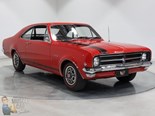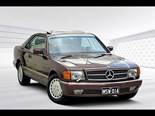Jaguar XK8/XKR: Buyers Guide
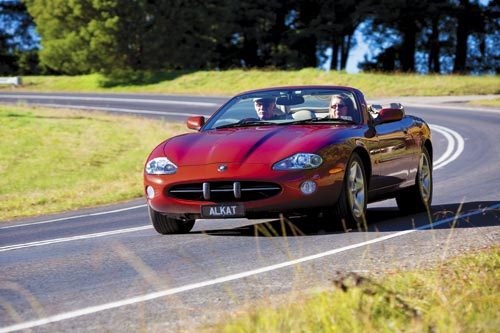 Buyer's Guide: Jaguar XK8/XKR
Buyer's Guide: Jaguar XK8/XKR

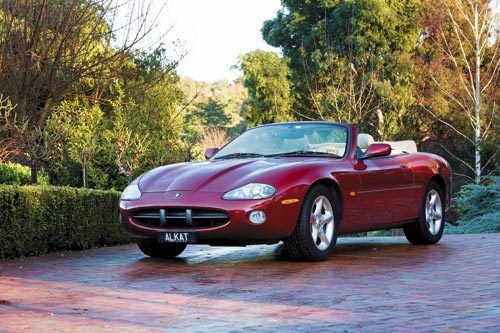 Buyer's Guide: Jaguar XK8/XKR
Buyer's Guide: Jaguar XK8/XKR

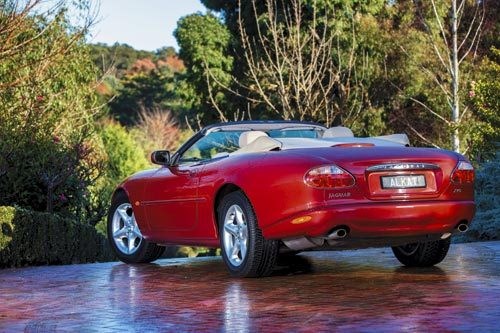 Buyer's Guide: Jaguar XK8/XKR
Buyer's Guide: Jaguar XK8/XKR

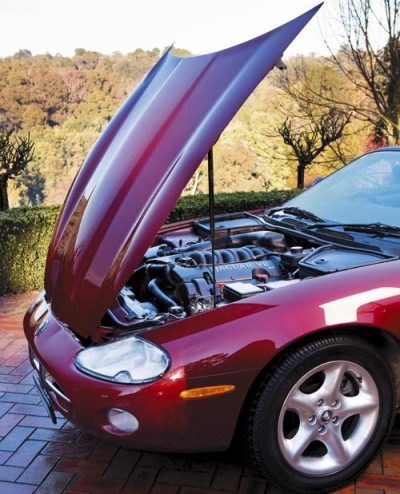 Buyer's Guide: Jaguar XK8/XKR
Buyer's Guide: Jaguar XK8/XKR

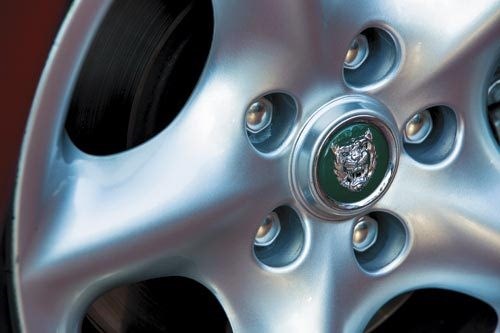 Buyer's Guide: Jaguar XK8/XKR
Buyer's Guide: Jaguar XK8/XKR

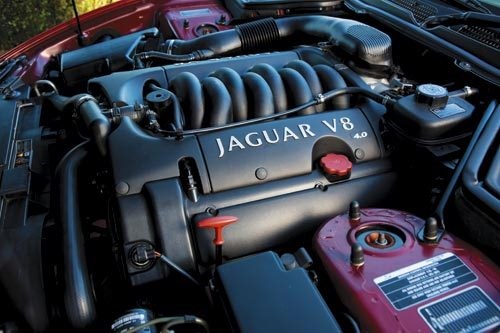 Buyer's Guide: Jaguar XK8/XKR
Buyer's Guide: Jaguar XK8/XKR

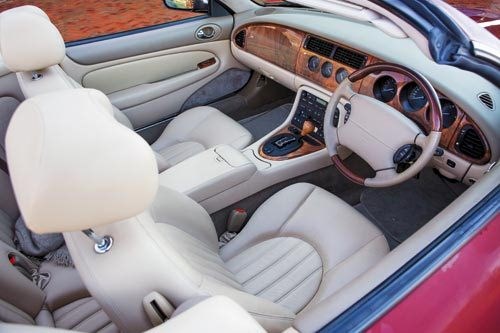 Buyer's Guide: Jaguar XK8/XKR
Buyer's Guide: Jaguar XK8/XKR

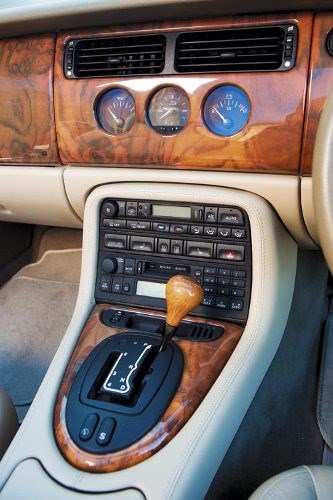 Buyer's Guide: Jaguar XK8/XKR
Buyer's Guide: Jaguar XK8/XKR


|
|
Buyer's Guide: Jaguar XK8/XKR
|

|
|
Buyer's Guide: Jaguar XK8/XKR
|

|
|
Buyer's Guide: Jaguar XK8/XKR
|

|
|
Buyer's Guide: Jaguar XK8/XKR
|

|
|
Buyer's Guide: Jaguar XK8/XKR
|

|
|
Buyer's Guide: Jaguar XK8/XKR
|

|
|
Buyer's Guide: Jaguar XK8/XKR
|

|
|
Buyer's Guide: Jaguar XK8/XKR
|
It was launched in Geneva, just like the E-type 35 years earlier, but was the Jaguar XK8 sports car or sophisticate?

|
|
Buyer's Guide: Jaguar XK8/XKR
|
Jaguar XK8/XKR
Ever since its E-Type stunned the world in 1961, Jaguar has spent millions chasing a design that could emulate the impact of that car. Thirty years of refinement turned the XJ-S into a fine touring machine and brought an unexpected Bathurst 1000 win but it was never going to rate as a real ‘sports’ car.
Then along came Ford with a fat wallet and grand ideas of rekindling the Jaguar of olde. Le Mans dominance and some revolutionary engineering could have spawned something special, but conservatism reigned and delivered us the subtle XK8.
Work on the new Grand Tourer had been ongoing for almost 10 years before the XK’s introduction. Four design teams followed separate paths, with all committed to building a car around the new DOHC, four-valve per cylinder V8 engine.
The XK launch came, as it had 35 years earlier for the E-Type, at the Geneva Motor Show. The range displayed in March, 1996 comprised XK8 coupés and convertibles in Classic or Sport trim levels.
Australians keen to own the first truly new Jaguar in a decade needed to wait until October for the first cars to appear in showrooms. After recording a strong 140 sales during its first full year in the market (1998) the XK8/XKR combo would never again break 100 units per annum.
At $182,000 for a Classic coupé, price was a major barrier to big sales. However, for their money XK8 buyers enjoyed superb new chassis underpinnings and electronics superior to anything previously fitted to a road-going Jag. Inside remained ‘traditional’ in its leather ’n’ timber ambience, with climate-control air-con, power seat adjusters, a trip computer and advanced sound system.
Convertibles came with additional strengthening and a complex system of hydraulics for the electric top. They weighed 90kg more than a coupé and were $30,000 dearer.
Jaguar had been offering supercharged sedans since 1994 and performance-loving enthusiasts waited impatiently for the XKR. It arrived six months after the base model and immediately set new benchmarks in two of the attributes associated with Jaguar; grace and pace. Not much in the way of space, but you can’t have everything.
The original XKR engine produced 276kW against the basic version’s 216kW and that was sufficient to fling it into the record books as Jaguar’s fastest-accelerating production car (excluding the XJ220).
The standard V8 came initially with a ZF five-speed automatic and the supercharged R with a Mercedes-Benz ’box. A 2002 update saw both flicked in favour of a modernised ZF six-speed auto.
Almost immediately came rumblings that had potential buyers fearing the old era of abysmal quality control had returned.
Cars in regions where the fuel had high sulphur content suffered damage to the Nikasil cylinder wall coating; often resulting in a costly engine change under warranty. Less serious, but punishing for a manufacturer struggling to remain viable, were wheel bearing and suspension component failures, electronic glitches affecting engine management and the transmission and leaking roof hydraulics in the convertible version.
Most worrying for Australian owners was the likelihood that plastic timing chain guides and adjusters – used reportedly to save weight – could disintegrate and cause the chain to slip with consequent engine damage. Factory rectification didn’t come until 2001 when metal guides were adopted but most cars have by now been retro-fitted to prevent failures.
By 2002, the XK8 and R ranges were overdue for an upgrade. To keep pace with buyer expectations and incorporate some long-overdue design changes, the V8 was expanded to 4.2 litres and the power increased slightly to 224kW.
Prices increased marginally ($188,000 for an XK8 coupé and reaching $237,000 for the XKR convertible) but remained unchanged until mid-2006 when the range was withdrawn to make way for a new XK.
ON THE ROAD
You know the old story about big cars shrinking around you as familiarity grows? Well the XK8 isn’t going to do that. The seats are low and the dash high, with small windows and paltry rear vision. As in an E-Type, you sight down a massive expanse of bonnet and need to consciously move your head when aligning the car with an upcoming bend.
The seats aren’t the big, floppy armchairs you might expect in a car of this calibre and they are well-shaped, give reasonable lateral support and look beautiful. Some people may find the massive console/storage box that separates driver and passenger intrusive and that it makes the seat-belt difficult to fasten to its clip.
The worst, or perhaps best, aspect of the XKs is the way they cosset front seat occupants while scrunching those behind into a chiropractor’s nirvana. The back seats also offer decent shape and support but leg room is paltry and getting into a coupé demands gymnastic skills.
The V8 is smooth and, once certain design flaws were overcome, delivered reliable service and considerable kilometres before a rebuild became necessary. So too the five-speed transmissions which used Jaguar’s pioneering ‘J-gate’ selector to provide a bit of fun for enthusiast owners who might otherwise bemoan the absence of a full manual gearbox.
Performance from the basic engine was acceptable but for seriously fast progress you need the supercharged car – preferably a later 4.2-litre.
Both versions have variable-ratio power steering that is feather-light at parking speeds and supposed to deliver more resistance and information as speeds increase. When compared with earlier Jag steering it’s superb but won’t quite match the informative feel of a Porsche Carrera or M-spec BMW.
The XK tyres look massive but need to work very hard. Spec R versions of the XKR came with 20-inch rims and 35-profile rubber which dealt adequately with the supercharged cars’ weight and performance. Opting for a wider wheel/tyre combination on any of the V8s will be wise if you plan some track running.
As is often said about luxury cars, those who need ask about fuel consumption can’t afford one. That is super-true of the XKs, as the maintenance and tyre costs will dwarf the fuel bill. If you drive the car more than 500 kilometres a week the monthly petrol bill will be about $400.
Just for the record, local tests came back with averages in the 11.0-12.5L/100km range. Foot-flat motoring with either engine more than doubles those numbers.
BUYING
More than 90,000 XK8 and XKRs were sold during almost 10 years of production but they weren’t big sellers in the Australian market. Unsurprisingly, the US was a big market and today LHD cars are very cheap.
As explained by the owner of our feature car, XK8s and Rs remain aspirational purchases but it can come as a real surprise to find out just how affordable a good quality example can be.
Resale values even when these cars were new were appalling. Add to that buyer concerns about work that may be needed and it’s understandable that high-kilometre cars have fallen to less than $20,000.
Advice from convertible owner Allan Foley is to inspect as many cars as you can and buy the best you can afford. Repair and parts prices are hefty so unless you are qualified to undertake major mechanical repairs it isn’t viable to ‘do up’ a neglected XK8 or supercharged car.
Trim and top condition is more important than the mechanicals.Tatty leather and water coming in through a torn top should consign a car to the wreckers.
BUYER'S CHECKLIST
Body & Chassis
The shape of the XK8 makes it a magnet for value-sapping paint and panel damage. The extremities are hard to sight when parking and those long doors are a liability in confined spaces. Corrosion of any kind should not be an issue in cars of this age so if you find bubbling or discoloured paint, avoid the car. Find a means of getting underneath to check the aluminium front cross-member. Cracks or repairs of any kind are not acceptable and new units seem unavailable, with ‘recyclers’ asking up to $2000 for undamaged replacements. Convertible tops need to fold and unfurl within 20 seconds of activation. Any leaks need to be rectified quickly or the mechanism can jam and require tedious dismantling.
Engine & transmission
Early V8s had serious durability issues, however most should now have been modified. The problem was principally due to timing chain tensioners that failed due to sub-standard materials and caused internal engine damage. If you have one of these cars and detect a rattle from the timing chain housings, stop the engine and have the car towed to a repairer. They also overheat if the cooling system has been neglected. Make sure that the transmission shifts smoothly, even under full throttle. Down-shifts and manual changes should be equally slick.
Suspension & Brakes
Weight and grippy rubber place considerable stress on the XK’s complex suspension. If everything wears out at once – which it can – the cost is scary. Rumbling from the front end will most likely be the sealed-for-life wheel bearings which aren’t too dear, but other clunks come from a variety of sources including damper mountings and wishbone bushings. Most parts remain available but replacing a small ‘test’ selection of items produced a bill of $1400 per side. Worn brakes shudder under light pedal pressures but plenty of uprated rotors and pads are available. Accelerate hard then lift the throttle to hear clunks from the rear drive-shafts and suspension bushings.
Interior & Electrics
Plenty here to check even before calling in an expert for final evaluation. Water getting into a convertible can wreak havoc with electrical items, so feel for dampness under the seats then test seat adjusters and windows. A new centre console from the UK’s largest Jaguar parts supplier will cost more than $1200 once GST and freight charges are added. Cracked or discoloured timber can be replaced but is expensive unless you find a friendly wrecker.
I OWN IT...
But only just. After decades of owning ‘traditional’ Triumph sports cars, Allan Foley swapped the scarf and goggles for heated leather seats and an electrically-operated roof.
When we contacted Allan to photograph his concours-winning XK8 convertible, he had owned it for less than a month and had only taken it on one serious drive. However, the previously-dedicated Triumph owner had spent many hours researching the pedigree of the open-topped V8 Jaguar.
However, it was a chance enquiry to Russell Cox of Melbourne’s Healey factory that eventually brought Allan and the XK together.
"Based on the TRs I bought from him I trusted Russell’s judgement and asked if he knew of a good XK8 for sale," Allan revealed. "As it happened the owner of this car was considering selling but it wasn’t actually on the market. It was more than I wanted to spend but there was a vast difference in quality between this car and others I’d seen." So too were differences in other areas.
"Comparing the handling and performance against a TR6 is extraordinary," he said. "Also the advances in safety; ABS and Traction Control and the fact that I can suggest to my wife that we go for a top-down drive in the XK and she says ‘yes’."
SPECIFICATIONS
Jaguar XK8/XKR (1996-2004)
Number built: XK8 Coupé 19,748, XK8 Conv. 46,760, XKR 9661, XKR Conv. 13,895
Body: all-steel, integrated body/chassis two-door coupé or convertible
Engine: 3996 or 4196cc V8, DOHC, 32v. Supercharger optional.
Power: 216kW @ 6100rpm*
Torque: 388Nm @ 4250rpm*
Performance: 0-100km/h – 7.2 seconds, 0-400m – 15.4 seconds*
Gearbox: 5- or 6-speed automatic
Suspension: independent with upper & lower wishbones, coil springs, telescopic shock absorbers, anti-roll bar (f); independent with coil springs, upper & lower links, telescopic shock absorbers, anti-roll bar (r)
Brakes: disc (f/r), ABS
Tyres: 245/45ZR18 (f); 255/45ZR18 radial (r)*
Price range: $16,000-60,000
Contact: Jaguar Drivers’ Clubs in all states www.jaguar.org.au
*XK8 4.0-litre
*****
Search used:
>> Search Jaguar cars for sale
Unique Cars magazine Value Guides
Sell your car for free right here
Get your monthly fix of news, reviews and stories on the greatest cars and minds in the automotive world.
Subscribe

.jpg)









.png)
